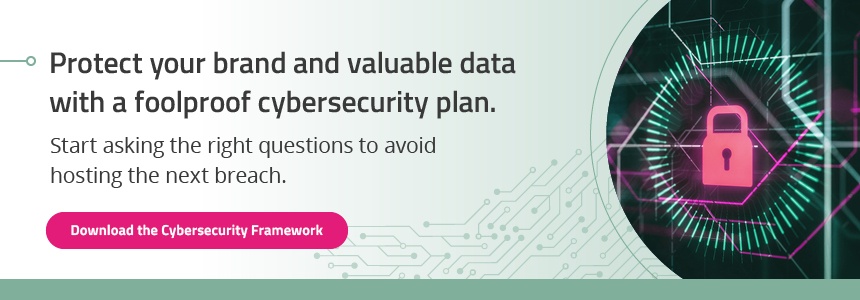-1.png?width=970&name=Untitled%20design%20(4)-1.png) Despite widespread news coverage about the increasing number of cyber attacks – according to Trend Micro, ransomware attacks on banks climbed by a staggering 1,318% last year – financial customers are seemingly unconcerned about the risk hackers pose for their accounts and data.
Despite widespread news coverage about the increasing number of cyber attacks – according to Trend Micro, ransomware attacks on banks climbed by a staggering 1,318% last year – financial customers are seemingly unconcerned about the risk hackers pose for their accounts and data.
As reported by SCMedia, FICO’s recent 2022 Digital Consumer Banking and Fraud Survey found that financial customers are “too complacent about the risk certain fraudsters pose, with only 5% worrying about real-time payments fraud, and many unwilling to accept new fraud management measures.”
Despite the growing cyberthreats, nearly three-quarters (72%) of U.S. financial customers believe “their banks do enough to keep their money safe”.
However, nearly half (46%) of U.S. financial customers part of the FICO study claim to have been victims of fraud and “nearly one in five (19%) have suffered account takeover fraud scams”.
Regardless of the level of concerns of customers, financial institutions, including credit unions, must develop, monitor and evolve risk management strategies to reduce threats to members and their data.
SCMedia quotes Nikhil Behl, chief marketing officer at FICO, “Even if consumers are not overly worried, financial institutions still need to be on their behalf. Organizations will need to continue to adapt and evolve to fight existing and emerging fraud threats. At the same time, they need to carefully balance fraud management with sustaining customer trust, and delivering frictionless digital and in-person customer experiences.”
With the increase in access and use of digital banking and digital currency, credit unions need to have more heightened awareness of potential cyber threats and ways to protect members as the cyber attack surfaces grow.
In a December article from SCMedia, Assaf Keren, vice president of enterprise security at PayPal, shares, “If the pandemic taught us anything, it’s that we're in an inflection point for digital currency and digital experiences across the board. People don't want to handle cash anymore. And I think that digital wallets, digital currencies and blockchain technology or blockchain-based currencies are the future.”
According to the FICO study, nearly 3 in 10 U.S. consumers say they would change banks if they feel their fraud incident was poorly dealt with.
Cyber threats are not a lost cause, and the risk can be mitigated with the right partners and training. Human error is to blame for a majority of attacks and with more employees working remotely, training and new policies are needed.
So, what can your organizations do?
- Develop an awareness campaign - Educate customers about cyber attacks and ways to mitigate risk. Using email, branch signage, text messages and social media, provide customers with insights and tips that are easy to understand and use. Frequent messaging will be important to reinforcing the importance of awareness and prevention.
- Host/sponsor events - Leverage exhibition tables and speaking engagements to share critical information and education materials with the public regardless if they are customers.
- Train employees - In addition to training employees for ways to identify and mitigate cyber attacks, provide them with simple talking points and educational materials to share with customers.
About the Author

Chris Sachse, CEO
Chris started Think|Stack in 2011 to serve organizations who serve their communities. Chris saw the important role tech and cybersecurity played in the financial services space. For over a decade Chris and his team have made it their mission to support, secure and empower credit unions to innovate through continuous technology improvement. He is an educator at heart and passionate about helping leaders and their teams understand how technology can support their goals while delivering seamless, enjoyable technology experiences to their people. As a cloud and cybersecurity leader, Chris is proud to sit on the MD Governor's Workforce Development Board as Vice Chair as well as the Cybersecurity Association of MD as Chair.






